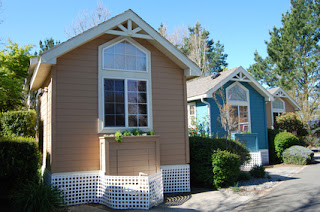When many people are on the brink of retirement, they often get the urge to downsize and scale back. Tiny houses are proving to be a popular option for those craving a smaller space and decreased cost of living.
Dr. Bergin cautions though that there may be a few challenges, from an orthopedic standpoint, that comes with tiny house dwelling.
- Unexpected Mobility Issues
- A change in mobility is a reality for a vast number of seniors, putting a damper on not only all the activities they had planned for in retirement, but also the simple tasks in everyday life. Getting around a tiny house in a wheelchair, or even with a walker, could be near impossible. “The potential temporary or even permanent need for a wheelchair is a reality, no matter how good your condition is when you retire,” said Dr. Bergin. “You [might] need the space for doorways and bathrooms, especially around the toilet and shower, to accommodate a wheelchair or walker. A tiny home is not likely to have both a tub and a separate walk-in shower. It doesn’t take much disability to render yourself unable to utilize a tub.”
- Difficulty Getting Upstairs
- Tiny houses often feature a small loft space for the second story, accessible only by a very narrow set of stairs, or sometimes even just a ladder – creating a huge potential for falls and injury. “Even if you’re healthy when you retire, the chance that you will someday have difficulty climbing stairs [is] high,” said Dr. Bergin.



